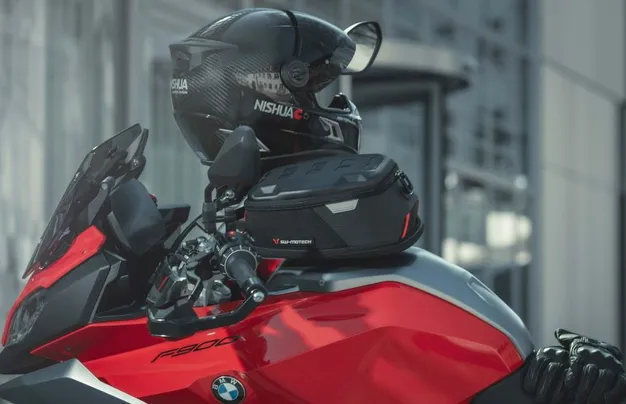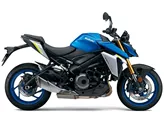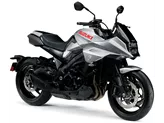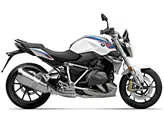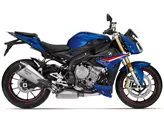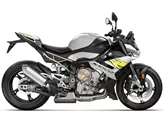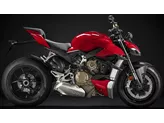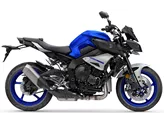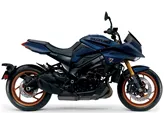BMW S 1000 R 2016 vs. Suzuki GSX-S1000 2018

BMW S 1000 R 2016

Suzuki GSX-S1000 2018
Vue d’ensemble - BMW S 1000 R 2016 vs Suzuki GSX-S1000 2018
The BMW S 1000 R 2016 and the Suzuki GSX-S1000 2018 are both naked bikes with similar engine types, displacements, and suspension systems. However, there are some notable differences between the two models.
In terms of engine power, the BMW S 1000 R 2016 has a slight advantage with 160 HP compared to the Suzuki GSX-S1000 2018's 149 HP. This extra power can provide a more thrilling and exhilarating riding experience on the BMW. Additionally, the BMW has a higher torque of 112 Nm compared to the Suzuki's 106 Nm, which can contribute to better acceleration and responsiveness.
Both bikes have four cylinders and a displacement of 999cc, ensuring a strong and smooth performance. The front suspension on both models is an upside-down telescopic fork, providing stability and control during cornering and braking. The rear suspension is a swing arm with a monoshock, further enhancing the bikes' handling capabilities.
In terms of chassis, both bikes feature an aluminum frame with a twin-tube design. This construction helps to keep the bikes lightweight while maintaining strength and rigidity. The BMW S 1000 R 2016 has a slightly lighter curb weight of 207 kg compared to the Suzuki GSX-S1000 2018's 209 kg, which can contribute to better maneuverability and agility.

BMW S 1000 R 2016
Both bikes have double disk front brakes with four pistons and radial technology, ensuring powerful and responsive braking performance. The Suzuki GSX-S1000 2018 comes with ABS as standard, providing an added safety feature. On the other hand, the BMW S 1000 R 2016 offers advanced rider assistance systems, including dynamic suspension, which can enhance the overall riding experience and comfort.
In terms of dimensions, the Suzuki GSX-S1000 2018 has a slightly longer wheelbase of 1460 mm compared to the BMW S 1000 R 2016's 1439 mm. This can contribute to better stability and handling at high speeds. Both bikes have similar front and rear tire widths and diameters, ensuring good traction and grip on the road.
The seat height on both models is relatively similar, with the Suzuki having a slightly higher seat height of 815 mm compared to the BMW's 814 mm. This may result in a slightly more upright riding position on the Suzuki.

Suzuki GSX-S1000 2018
In terms of fuel tank capacity, the BMW S 1000 R 2016 has a slightly larger tank with a capacity of 17.5 liters compared to the Suzuki GSX-S1000 2018's 17 liters. This can provide a slightly longer range between refueling stops.
In terms of strengths, the BMW S 1000 R 2016 is praised for its powerful and well-controllable engine, powerful braking system, and comfortable seating position. On the other hand, the Suzuki GSX-S1000 2018 is commended for its stable handling, sporty engine, attractive appearance, pleasant riding comfort, and dynamic yet serene riding experience.
In terms of weaknesses, the BMW S 1000 R 2016 is criticized for its expensive optional extras and a hard chassis. The Suzuki GSX-S1000 2018 is noted to be a little jerky when changing from push to load and could benefit from a quickshifter with a blipper.
Overall, both the BMW S 1000 R 2016 and the Suzuki GSX-S1000 2018 offer powerful and capable naked bikes with their own unique strengths and weaknesses. The choice between the two ultimately depends on the rider's preferences and priorities.
Caractéristiques techniques BMW S 1000 R 2016 par rapport à Suzuki GSX-S1000 2018
Avantages et inconvénients en comparaison
Avantages et inconvénients en comparaison
BMW S 1000 R 2016

Sur la BMW S 1000 R, on remarque à la fois la parenté étroite avec la Superbike S 1000 RR et la volonté de doter la machine d'un niveau de confort élevé pour la route et le quotidien. Le moteur quatre cylindres de 1000 cm3 se met donc au travail de manière brutale, tout en restant bien contrôlable, et la position de conduite est par conséquent confortable et sportive. Le fait que la S 1000 R soit l'une des power naked bikes les plus abordables est surprenant et réjouissant, mais il ne faut pas pour autant mettre la main sur la liste des équipements spéciaux - car grâce aux nombreuses caractéristiques irrésistibles, elle sera certainement plus chère.
Suzuki GSX-S1000 2018

La GSX-S 1000 de Suzuki a un look sexy, un son puissant et un matériel vraiment élégant. Elle est stable, facile à conduire et agréable à conduire. Si nécessaire, le moteur met les gaz. Mais il peut aussi être conduit avec douceur. Comparée aux Powernakeds les plus raffinés, il lui manque quelques caractéristiques, mais si l'on regarde l'étiquette de prix, on s'en rend compte rapidement : Un excellent choix !
Comparaison des prix Prix moyen du marché BMW S 1000 R vs Suzuki GSX-S1000
There are a few key differences between a BMW S 1000 R 2016 and a Suzuki GSX-S1000 2018. In terms of price, the actual average price of a BMW S 1000 R 2016 is about 18% higher. A BMW S 1000 R 2016 experiences a loss of 380 USD in one year and 1,940 USD in two years of ownership. This is offset by a loss of 270 USD and 1,010 USD for a Suzuki GSX-S1000 2018. Compared to Suzuki GSX-S1000 2018 there are more BMW S 1000 R 2016 bikes available on the 1000PS.de Marketplace, specifically 10 compared to 9. It takes less time to sell a BMW S 1000 R with 69 days compared to 177 days for a Suzuki GSX-S1000. Since model year 2014 1000PS.de editors have written 62 reviews for the BMW S 1000 R and 36 reviews for the Suzuki GSX-S1000 since model year 2015. The first review for the BMW S 1000 R was published on 11/3/2013 and now has more than 17,300 views. This compares to more than 17,100 views for the first review on Suzuki GSX-S1000 published on 9/27/2014.
